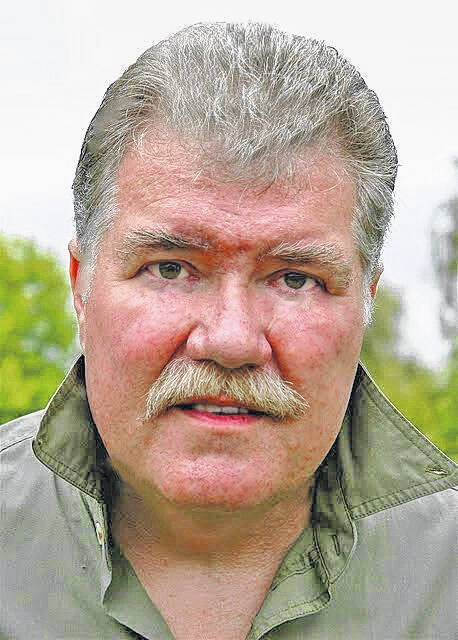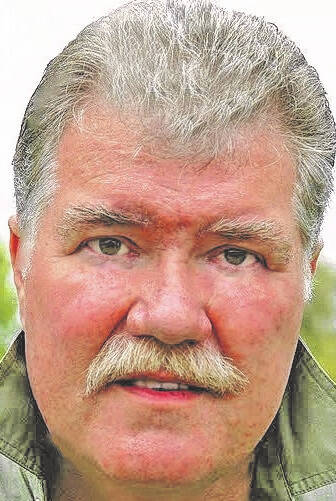

Buzzards probably aren’t the bird that first comes to the mind of most folks when thinking about spring.
Robins, maybe, or one of the other bubbly singers such as song sparrows, house finches, wood thrushes, or the indefatigable house wrens…but certainly not the somber, black-robed buzzard — or turkey vulture, if you insist on their proper nomenclature.
A couple of decades ago, before we moved into our riverbank cottage and found ourselves neighbors to a ragtag buzzard assembly, I would have said exactly the same thing.
But then I got to watch them close up and get better acquainted.
Buzzards are odd, interesting birds. Smarter than they look. Clannish, eccentric — sometimes decidedly goofy. Highly amusing and often inscrutable — they occasionally act as if they’re somehow aware of their reputation and trying to live up to all the cartoonish characterizations.
Their comings and goings are mysterious and regularly unfathomable to me — yet, paradoxically, in many ways as dependably prescribed and predictable as a ticking clock.
If we’re still being pedantic about proper nomenclature, the collective noun terminology for a group of buzzards — excuse me, turkey vultures — is a committee, wake, or looming, depending on whether they’re resting, feeding, or soaring.
Our buzzard congregation lives and roosts on the sycamore-wooded island directly across the channel from our cottage — at least most of the time. However, sometimes they largely disappear — for a day, or a week — roosting elsewhere and presumably soaring the skies thereabouts. It’s like they’re taking a brief getaway — but even then, they’ll often show up here for at least part of the day.
Depending on the year, and that particular winter’s harshness, the buzzard bunch may migrate to milder climes for a portion of that season — heading to a place where layers of ice and snow aren’t sealing off the landscape so severely as to make finding their next meal impossible.
Their return from this extended sojourn usually occurs in mid-February — well before spring’s official debut.
So why do I connect them to my thoughts of spring? What connection do these somber birds have with the vernal beginnings?
On calendars and almanacs, spring is the designation of an astronomical event. An occurrence that’s invisible.
Nevertheless, we’ve recently passed the season’s inceptive equinoctial mile-marker. Using the rarified math of modern astrophysics, factoring in the precisely calculated coordinates of such things as planetary tilt, earth’s spin speed and wobble, and the orbiting pathway of our year-long circumnavigation around the sun, those who can compute such complex problems have given an exact time: it’s a scientific fact — spring has sprung — as proclaimed by our calendars and almanacs, and one we’re asked to take on faith.
But calendars and almanacs are not schedules… at least not in nature’s scheme of things. And no two springs unfold identically.
While the days and weeks following spring’s premiere will eventually carry us into that picture-perfect seasonal image in our heads, we get disappointed when we forget March’s notorious reputation for vagaries and contrariness and expect too much too soon.
Too, we must also keep in mind the uniqueness of years. Every spring presents a new show!
Spring, as a season, is a singular individual — feisty one year, serving blustery skies and sometimes snowy last hurrahs; yet wonderfully gentle the next year, a sweet green slide that waltzes us merrily into summer.
This time around, we’ve gotten a sort of mixed bag weather-wise. Since we’ve turned the corner into the new season, most of the first few days have certainly looked like spring — with frequent blue skies, and often lots of accompanying bright sun.
However, the appearance of these lovely days has been deceiving. In spite of how they looked, these early days have struggled to make it into highs above the mid-40s, while several nights have bottomed out in the low-20s!
Yet, I must reiterate — while seasons may change slowly, stuttering and backtracking like a fox on a faint trail, their progression remains inexorably forward.
There’s a power and pull within spring that belies mere weather — a force that compels daffodils to rise up from the dark earth, sets ruby buds on the swamp maples to swelling, and stirs the snoozy groundhog to keep waddling forth from his snug burrow and munching on the few sparse tufts of greening grass.
It’s also the time when I spend more time than I’m willing to admit watching buzzards. Practically at will, I can glance through my deskside window, or step outside, and see a vulture’s outstretched form — sailing high in the sky or gliding low, almost brushing the treetops.
Buzzards are truly gravity-defying aerial masters! No bird soars and glides better. They can swoop and float along forever with nary a wing flap.
When spring comes, regardless of whether it’s cloudy and colorful, or sunny and warm, I swear there’s a distinct and apparent joy in their flight — an obvious jubilation and sense of pleasure that wasn’t there a few weeks before.
Spring does that to some of us — stirs up a mood of delight, a spirit of unbridled ebullience.
Spring is a time of reawakening, renewing, and resurrection. With the season’s due arrival comes an unshakeable certainty — a weatherproof truth in this vernal period of miracles and magic.
I feel it, the buzzards feel it. If I could fly, I’d be right up there, soaring alongside those quirky old birds, sharing their celebration of spring!
Reach Jim McGuire at [email protected].

